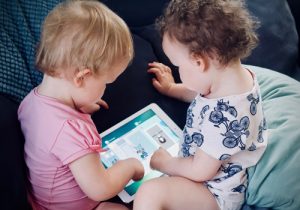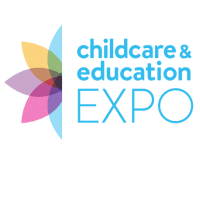Technology in the Early Years – Striking the Correct Balance
23rd November 2017
Share this entry:
By Marie-Louise Cadagan

The now archived Development matters document highlights the use of technology as early as in the 22-36 month bracket suggesting children should “acquire basic skills in operating some ICT equipment” Marsh et al 2005 states that this trend has been further asserted due to the belief that “moving images and information presented by computers are more engaging” While this be true in some circumstances, is there a danger of over-reliance on technology within our early years settings and in general society and what effect does this “screen time” have on a child’s speech and language development?
Although it is known to be important to develop a child’s ICT skills, use of technology and educational television programmes and DVD’s in our ever-changing 21st century society, surely this shouldn’t be to the detriment of other areas of development of the unique child? Although Marsh et al 2005 stated that the use of moving pictures to be “engaging” research compiled by Zimmerman et al 2007 argued that watching these DVD’s or over spending time on computers may actually hinder children’s language development. Furthermore, language acquisition comes from a child’s use of creativity (Froebel 1782-1852) and the need to interact with others. This is further echoed by the statement “children are hard-wired to learn through real-world experiences and interaction with real human beings” This means as early years practitioners, we are in a position to ensure that the children in our care receive the correct balance of “screen time” and access to meaningful interactions with adults and their peers in order for speech development to progress.
It is important as practitioners that we provide an enabling environment in order for our children to grow and develop “A child’s future choices, attainment, wellbeing, happiness and resilience are profoundly affected by the quality of guidance, love and care they receive during their first years. (Tickell 2011).
This means that in line with the EYFS 2017, we need to provide access to meaningful interactions with technology rather than using it just to pacify the children in our care. The question now is how does this translate into our Early Years environments?
Why attend Childcare Expo?
Join over 2,500 like-minded individuals from the early years sector who are dedicated to improving both practice and their childcare settings.
Attend educational seminars to credit your CPD
Meet the experts to have your questions answered
Receive fantastic onsite offers and discounts
Experience expert-led informative hands-on workshops
Network with peers and industry players
Pick up hundreds of new product ideas and services
And most of all, enjoy a great day out with your colleagues




